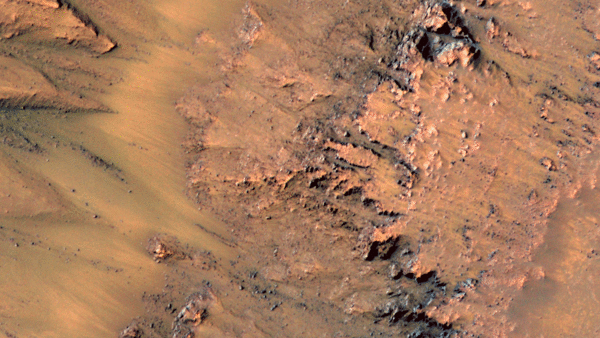8 Things You Need To Know About NASA Finding Water On Mars
Why everyone seems to be missing the point, for starters.

NASA have made a very exciting announcement and confirmed the presence of liquid water on Mars. Again.
Both the general public and the press were somewhat split down the middle, with reactions ranging from "OMG CAN WE SEND A ASTRONAUT? PLEEEASE?" and "Okay, great but what about aliens?"
In fact, much of Twitter seemed straight up confused, as scientists have been proving the existence of water on Mars on and off for a good few years now. Unfortunately, the excitement of the first party will most likely abate when we don't immediately fling Matt Damon up there for realsies, and the underwhelmed attitude of the second party is likely to deepen the more they learn about it.
This is all rather missing the point though. To NASA's credit, they didn't announce it on a big, whizzy talk show with lots of confetti, fireworks and inflatable aliens. The understated press conference with measured answers and proper science was what the discovery warranted (although the social media storm was pretty big).
So, if there are no great lakes full of space dolphins, then what are these streaks and why are they so important?
8. What Are These Dark Streaks?

The seasonal dark streaks on the surface of Mars have long been a cause of excitement amongst NASA scientists for a number of years now. Arguments pinged back and forth as to whether these Recurring Slope Lineae (RSL) were caused by running water or shifting sand.
Now, thanks to some spectral analysis by the Mars Reconnaissance Orbiter on the lines, we're pretty certain that these are caused by what is essentially seasonal melt water - but not as we know it.
Mars is generally speaking pretty cold, with lows of -60°C or so, but as Mars has an axial tilt similar to that of Earth's plus a more eccentric orbit, the surface temperature can vary greatly, with highs in the summer months reaching as much as 20°C near the equator.
It is thought that, during these summer months any water ice locked up in could be melting and vaporising and a type of hydrated salt in the soil known as perchlorates absorb the atmospheric water and lock it into their crystalline structure, allowing the water to exist in its liquid state at much lower temperatures.
It is thought that the streaks are basically left over salt deposits resulting from this process.